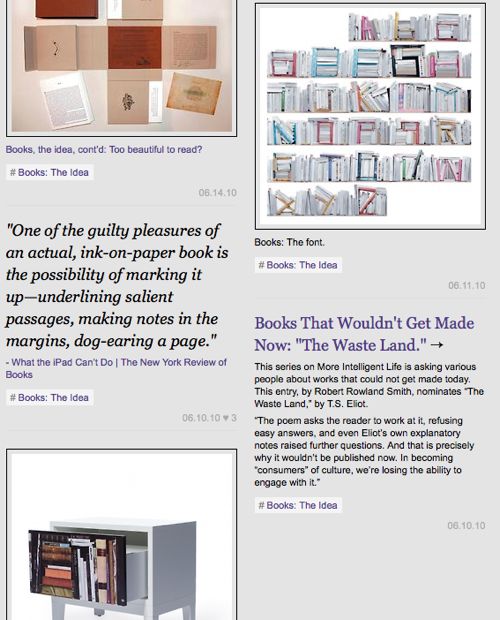
Click to continue the series in its new home.
Back in April I posted a couple of items about a fantastic 1995 Nicholson Baker New Yorker piece about books used as props in catalogs. And on April 23 I promised “one more post” on the subject, “next week.” I forgot to do so — and not one of you reminded me! Sheesh. No wonder this series has moved.
Anyway I found the draft of that “lost post” this weekend, quickly updated and finished it, and here it is:
This site’s occasional series on the idea of the book has included several instances of things (a necklace, a ring, etc.) made to look like books. That 1995 Baker piece, as it happens, mentioned similar stuff from back then:
Not only is the book the prop of commonest resort in the world of mail order, but objects that resemble books – non-book items that carry bookishly antiquarian detailing – are suddenly popular…. Catalogues now offer book-patterned ties, book brooches, and settes covered in tromp-l’oiel-bookshelf fabric.
He gives other examples: a table whose base is “a fake stack” of leather-bound books, a “book-shaped box of candy bars,” book coasters, a magnifying glass with “faux bookspine handle,” and even a “Faux Book Cassette Holder,” to disguise the evidence of your middlebrow listening habits with a suggestion of more respectable reading ones.
On an aesthetic note, Baker suggests all this leather-bound book signifying might be replaced, or at least complemented, with visual suggestions of Penguin paperbacks and the like: “Our working notion of what books look like is on the verge of becoming frozen in a brownish fantasy phase that may estrange us from, and therefore weaken our resolve to read, the books we actually own.”
A fascinating point, probably even more salient now that the proposition of ebooks squeezing away physical ones is so widely discussed. Many argue that such judgments are premature — but surely there’s a good case to be made that our idea of what a physical book is may well cease to evolve soon, if it hasn’t already.
Anyway, this series is continuing, but not here. Please visit http://murketing.tumblr.com to follow along, if you like.
Posted Under:
The Designed Life
This post was written by Rob Walker on June 28, 2010
Comments Off on Books: The Idea: Not here anymore!

In response to this morning’s Consumed column — in which I pivoted from the flurry of news stories about suicides at the Foxconn factories in China and suggested that a more meaningful form of “transparency” in a global consumer marketplace would entail being able to learn, easily, where exactly and specfically our stuff is made — I got a great note from Matthew Hockenberry, a visiting scientist at the MIT Center for Future Civic Media.
Turns out his team is working on something that sounds like what I imagined in the column:
Sourcemap (www.sourcemap.org) is an MIT project creating an open source and open data supply chain publishing platform that enables exactly the kind of transparency you talk about. Companies (and investigative consumers, academics and journalists) can use Sourcemap to share the supply chains behind products and show us all exactly where they come from. At the same time the site creates the opportunity to do automatic calculations based on this information, like carbon footprinting – with the only open data carbon catalog on the web.
We’re actively working on interesting partnerships with large and small business, governments, communities, journalists and educators. We’re not quite there yet, but we can definitely tell you where some things come from. On the site you can find things like Ikea beds, Tesla roadsters, ipods, where whole foods gets some of its ingredients, bicycles, Sony PSPs – there are even a couple of planes on there (airbus and boeing).
This is really cool! It’s not precisely what I had in mind, but it has great potential — and as I indicated in the column, I think this sort of thing is a lot more compelling than price-comparison apps. Check out the SourceMap.org for more.
Like any open source project, its ultimate success depends on people knowing about it, and participating. So: If you think, as I do, that this is a great idea, I hope you’ll spread the word.
UPDATE:
Here are some more sites, in addition to the above, and those mentioned in the column itself:
Closet Tour: “CLOSETTOUR is a blog about wondering what to wear in an increasingly complicated world. It is about finding value, and values in fashion, by following our clothing’s narrative threads.” Via Jeff Jarvis.
Andrew Condon also points out company-specific transparency efforts at GreenSource Organic, and, of course, that good old standby, Patagonia.
Core 77 follows up here. Consumerist, here. Daily Grommet follows up here. Also, here is a the Ecosystem Notebook’s “ingredients” page, an interesting example.
And furthermore: Via Allan C. here is a slideshow of tips for finding out how your stuff is made, from Jen van der Meer:
 OPEN SECRETS:
OPEN SECRETS:
Technology has made the consumer marketplace transparent – sometimes.
We’re accustomed to finding what we want with a simple click, but a lot remains murky until bad news pushes it into the open. … What if finding out where and how our stuff was made was as easy as finding the lowest price or peer opinions? What impact would it have on consumer choices? Wouldn’t that be a more meaningful form of transparency in a global economy?
Read the column in the June 27, 2010, New York Times Magazine, or here.
Discuss, make fun of, or praise this column to the skies at the Consumed Facebook page.
Posted Under:
Consumed
This post was written by Rob Walker on June 26, 2010
Comments Off on In The New York Times Magazine: True gadget transparency
We’ve added a new member to the Unconsumption Tumblr team: “digital roustabout” Jaime Beckland, based in Portland, OR.
There will be more news on the Unconsumption front in the weeks ahead; stay tuned.
Meanwhile, if you’ve never checked out the Tumblr, I beg you to gaze upon the archive. It’s amazing! I’m honored to work with this team of volunteer contributors. Seriously. It’s endlessly rewarding to me, and I hope you’ll find some inspiration there. And even if you have already checked it out, I dunno, tell a friend?
Posted Under:
Unconsumption
This post was written by Rob Walker on June 14, 2010
Comments Off on Unconsumption update
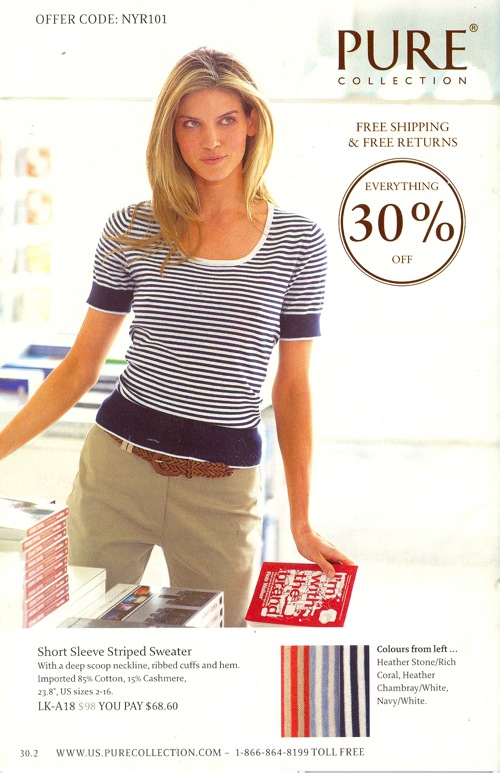
Ever wondered what my typical reader looks like?
Thanks to Jim Hanas for pointing out this ad for (the somewhat alarmingly named) Pure Collection, in which the model is clutching, of all things, a copy of the U.K. version of Buying In — which is titled I’m With The Brand over there, as mentioned earlier. I gather this is the back page of a catalog, and is apparently the only example in said catalog of a picture that includes a book (catalog use of books-as-props being something this series mentioned here, here and here.
I’ve vaguely pondered what it would mean if someone chose to product-place this particular book.
I’m still not sure.
Posted Under:
Buying In (the book)
This post was written by Rob Walker on June 14, 2010
Comments Off on My product has been placed
In general, the series Books: The Idea is currently migrating over to MKTG. But here’s one last entry on this site.
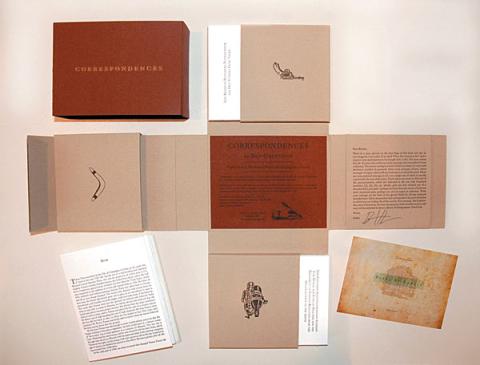
Correspondences. Click for more.
Ben Greenman’s book Correspondences, published last year, was described like so by its publisher:
Each hand-crafted, signed copy is composed of an unfolding chip-board casing built by letter-press maven Brandon Mise, which contains pockets for three accordion books bearing two stories each. The seventh story, which is written by Mr. Greenman with intentional gaps in the narrative, is printed on the casing and does something unprecedented: It invites the reader to contribute to the collection.The fourth pocket in the casing contains a postcard that the reader can use to fill in the gaps in Greenman’s narrative and send to Hotel St. George Press for possible publication in future online and paperback editions of the book.
Now that’s a book in the form of a beautiful object! Not surprisingly, it cost $50. Time Out Chicago said: “As an object, Correspondences is a genius invention. But as a book, it works just as well.”
Note the two distinct categories: “as an object” and “as a book.”
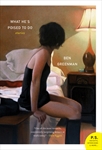 The book is about to be published again, under the title What He’s Poised To Do, and in the form of, well, of a traditional collection-of-words object. (On a not-unrelated note, Mr. Greenman, a three-time contributor to Significant Objects, has guest-curated a week of objects and epistolary stories for us over on that site, starting today.)
The book is about to be published again, under the title What He’s Poised To Do, and in the form of, well, of a traditional collection-of-words object. (On a not-unrelated note, Mr. Greenman, a three-time contributor to Significant Objects, has guest-curated a week of objects and epistolary stories for us over on that site, starting today.)
It seems that one reaction to the original version was that at it was such a great object that it was, in effect, too nice to monkey with — that is to say, it was too beautiful to read. Perhaps the new, more trad-book version will actually be more widely read. And is this not the idea of the book? To be read? Maybe, maybe not.
Personally, I’d opt for the fabulous-object version, if I had a choice.
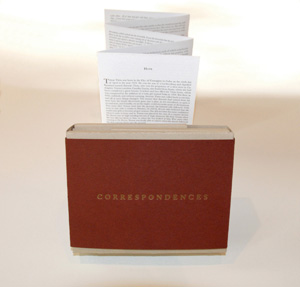
Meanwhile, as long as we’re on the subject of the super-objectified book, Gabriel Levinson recently hipped me to this: Read more
Posted Under:
The Designed Life
This post was written by Rob Walker on June 14, 2010
Comments Off on Books, the idea, cont’d: Too beautiful to read?
 LIFELONG EARNING
LIFELONG EARNING
The appeal of the (sort of) grown-up, geeky merit badge
Much about the function of the merit badge actually fits pretty neatly with the spirit of the time. The nagging sense of needing to acquire new skills, all the time, is palpable. That anxiety dovetails with a self-improvement ethos that fills whole sections of bookstores, cross-matched with the various ways technology prods us to tabulate parodic amounts of personal-behavior data. If we rack up badges for our online “achievements,” we may as well do the same for our offline victories, too. And if we use a form associated with preadulthood, it makes sense, since all of the above comes with a chaser of nostalgia and widespread reluctance to completely put away childish things.
Churlish? To the contrary, I can’t think of a more sweetly upbeat response to a turbulent culture than an actual grown-up sporting a merit badge.
Read the column in the June 13, 2010, New York Times Magazine, or here.
Discuss, make fun of, or praise this column to the skies at the Consumed Facebook page.
Posted Under:
Consumed,
The Designed Life
This post was written by Rob Walker on June 12, 2010
Comments Off on In The New York Times Magazine: Merit badges
Finally announced, here.
Posted Under:
Uncategorized
This post was written by Rob Walker on June 9, 2010
Comments Off on Significant Objects: The book
 STUCK ON YOU:
STUCK ON YOU:
Analyzing what bumper stickers say about drivers — and to whom.
Who cares what strangers in other cars think about you? One answer is that a lot of people must care or there would be no such thing as bumper stickers.
Read the column in the June 6, 2010, New York Times Magazine, or here.
Discuss, make fun of, or praise this column to the skies at the Consumed Facebook page.
Posted Under:
Consumed
This post was written by Rob Walker on June 5, 2010
Comments Off on In The New York Times Magazine: Bumper-sticker meanings
Would you pay for an anonymous creation? Weigh in on this post over at Significant Objects, asking some questions about Anonymous Art, Mystery Objects, and Unknown Authors.
In other Significant Objects news, W+K proposes a retail concept “inspired by Significant Objects.” We look forward to the royalties!
Good weekend, all….
Posted Under:
Uncategorized
This post was written by Rob Walker on June 4, 2010
Comments Off on Elsewhere: Anonymous Authors
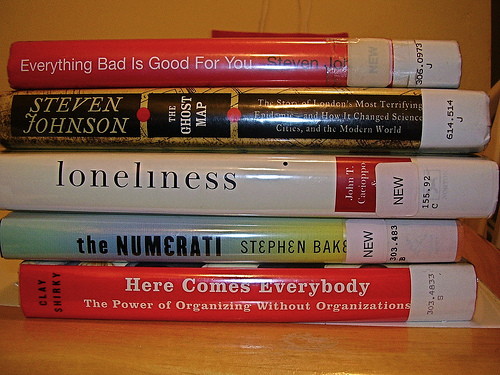
Click for more info
Friend of Murketing Gladys Santiago describes, here, her NYPL Connect project, which aims to “examine library books as catalysts to social networking. I envision this project being part real-world GoodReads, part book club. I’m interested in discovering what sort of connections can be made through communal objects.”
In noting the unique history-suggesting aspect of library books (yes, as a matter of fact, I do check books out from my walkably local library!), she’s onto something. And she’s looking to see if a connection can be made — by leaving a handwritten note in certain library books. Here’s the methodology:
I placed a handwritten note inside one of the NYPL’s 15 copies of David Shields’s Reality Hunger: A Manifesto that explains the purpose of this project and includes my contact information. I always enjoy finding things nestled between the pages of a book. I’ve found lottery tickets (all losers), a Polaroid picture, receipts, scrap paper, postcards–all evidence of life before me–and I welcome these mementos from readers past. I hope other readers do as well and are open to the possibility of connecting.
Even though I own a copy, I’m going to place a note in Clay Shirky’s Here Comes Every Body because I think this project (which for lack of a better name, I call NYPL Connect) touches on many of the concepts he discusses. A possible challenge, besides getting people to respond, might be NYPL staff or other borrowers discarding my notes before someone willing to participate reaches out to me. Regardless, I’m going to include a note in every book I check out and hope I hear from some interesting folks.
This is an awesome project! Please blog/tweet or whatever about it. And you don’t have to mention me, pretend you found it on your own, I don’t care. But she’s really onto something interesting here and the effort deserves attention. I’m dying to know if she’ll get a response to any of her notes. So cool.
This post is part of a series.
Posted Under:
"Social" studies
This post was written by Rob Walker on June 3, 2010
Comments Off on Books, the idea: Library book as connector

Former books "liberated," but still bookylikeish. Click for more.
“Are books on their way to being mere decoration?” asks the headline of this Sacramento Bee article. That of course is a running theme of this series. The article starts out by noting the item above, Antique Coverless Book Bundles, whose attraction is described by Restoration Hardware like so: “Liberated from their covers, stitched and bound with jute twine, the foxed and faded pages of old books become objêts d’art.” Books, or the suggestion of books in a book-derived object, “really do harken back to an older time,” a spokesman for the retailer tells the Bee. “These add texture to a room; they add a sense of age to the room.”
Yes, a sense of age. This is another example of the book as raw material — though in this case not for artists, but on a mass-retail scale. Anyway, the Bee writer, Gina Kim, pivots:
Is this it, the epilogue? As the Kindle, iPad and other e-readers become increasingly popular in the digital age, dog-eared books are no longer simply a tool for transporting literary works. They’ve become decoration.
Surely books have served as decoration long before the Kindle and iPad appeared, but the point is related to my interest in the way the e-book limits what I guess I’ll call the signaling function of physical books: In an e-book future, might we dream up rationales for keeping physical and displayable books around us, filling or fascinating shelves, furnishing our rooms? Kim again:
Electronic chapters and verses can’t be displayed on bookshelves. So people are turning toward companies like
Juniper Books and
Half Price Books, which sell literature by the yard with the promise that multiple copies of the same book will not be in their shipments.
“What’s interesting to me is in spite of what everyone says about the death of books, people still care to show off that they own books,” said Edward Tenner, a research affiliate at Princeton University’s Center for Arts and Cultural Policy Studies.
The best quote in the piece is this hilariously blunt assessment from a librarian in Rhode Island, describing the antecedents for display-only bookage: 19th Century mass-produced collected-works sets that added (“a sense of”) classy erudition to their owners’ homes:
You’re Joe Blow in the late 19th century America and you want a library like Lord So-And-So has but you don’t have the wherewithal to collect books and put them in their own bindings. So you buy the works of Washington Irving in sets. Did you read these books? One hopes, but generally speaking, they’re window dressing.
Posted Under:
The Designed Life
This post was written by Rob Walker on June 3, 2010
Comments Off on Books, the idea: “Mere decoration”?
You don’t have to be a technophobe or a Luddite to dismiss out of hand the idea of reading on a machine. Maybe it is muscle memory, but there is something deeply satisfying about a “real” book, a book made of pages bound between hard or soft covers, into which you can slip a bookmark, whose pages you can fan, whose binding you can crack and fold as you move from beginning to end. E-books, by contrast, whatever platform delivers them, are ephemeral. Yes, you can carry thousands of them in your pocket, but what will you have to show for it? What will fill your bookshelves?
Then, one day, you find yourself housebound, and Wolf Hall has just won the Booker Prize, and you download a sample onto your iPhone, and just like with a book printed on paper you are pulled into the story and are grateful to be able to keep reading, and your resistance disappears, and you press the “buy” button—it’s so easy!—and that is how it starts.
— Sue Halpern in the New York Review
This post part of a sporadic and increasingly incoherent series.
Posted Under:
Consumer Behavior
This post was written by Rob Walker on June 1, 2010
Comments Off on Books, the Idea: How e-appeal happens




 "
"


 OPEN SECRETS:
OPEN SECRETS:

















 Kim Fellner's book
Kim Fellner's book  A
A